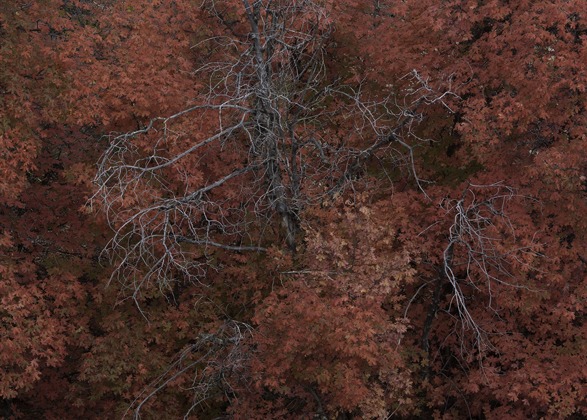The Landscape Photographers Calendar: what to shoot in October

Tony Worobiec is a Fellow of the Royal Photographic Society and one of our Fotospeed photographers. He has won awards for photography both in the UK and internationally, and has authored 16 books. In this blog post, adapted from his RPS workshop, "The Landscape Photographers Calendar", Tony tells you what to look out for in October. Tony uses Fotospeed’s Platinum Baryta and Platinum Matt.
-->
Tony Worobiec is a Fellow of the Royal Photographic Society and one of our Fotospeed photographers. He has won awards for photography both in the UK and internationally, and has authored 16 books. In this blog post, adapted from his RPS workshop, "The Landscape Photographers Calendar", Tony tells you what to look out for in October. Tony uses Fotospeed’s Platinum Baryta and Platinum Matt.
You can find out more about Tony here.
When John Keats wrote the immortal line "Season of mists and mellow fruitfulness", he undoubtedly had October in mind. As photographers, it would be churlish not to exploit the awesome colours October has to offer, but also the glorious mists. It is important to appreciate however, that many of these features are weather dependent, so don't put off until tomorrow what you can photograph today. As a simple example, you may have noticed a beautiful avenue of trees in the local park and have decided to photograph them later in the week – but be warned! It only takes a sudden period of heavy rain and strong winds to completely strip the trees of their autumnal colour, which is not uncommon at this time of year. You also need to be aware that the colour changes are dependent on the species, the day and night-time temperatures, and where in the country you live.

A plantation of trees
Trees come in all shapes and sizes and each species display their own characteristics, not only in terms of colour, but also when they are likely to shed their leaves. Great photographs can be taken when shooting a cluster of mixed species, although it can prove a little more challenging. If you want a simple clear-cut design, then search out a regular plantation of trees as the colour changes will be consistent; it can be irritating when shooting a mixed species when one of them remains stubbornly green. Trees grown in plantations often appear in regular rows, therefore, composing your picture is also easier. Lighting of course is an important consideration, and generally overcast skies seem to work best; unless the shadows are particularly regular, they can pose a problem, so aim to avoid harsh sunlight.

Isolated buildings
A feature that is overlooked in the summer months are those strange, innocuous buildings that appear in the landscape. As we slip into October and the landscape becomes sparser, they are increasingly more apparent. Often these features can appear quite enigmatic, particularly when photographed in the quiet light of October. From a photographic standpoint, the main challenge is to photograph the building within the landscape without including any other extraneous detail, which is where a telephoto lens becomes so useful. Because the light remains relatively low in the month of October, it is much easier to introduce a sense of pathos into your photography which certainly chimes with this genre of photography.

Misty landscapes
One of the joys of Autumn are the mists we often experience and they appear to be at their most resplendent throughout the month of October. The huge benefit of mists is that they transform just about any landscape, so you rarely ever need to travel far. The photographic opportunities they offer are considerable. First, as fog tends to reduce colour saturation, a much stronger emphasis is placed on the tonal values. One often finds that images taken in mist can be very successfully converted to black and white, although if you retain your landscape as a colour image, the hues will appear blissfully nuanced. Secondly, when photographing mists, you are able to explore a visual phenomenon known as tonal recession. What this means is that distant objects appear considerably lighter than those nearer the camera. Finally, because of the reduced visibility, the images captured tend to be simpler and graphic in nature. Any landscape featuring trees lend itself particularly well to being photographed in mist.

Altostratus Translucidus
A weather feature which is akin to mist and frequently occurs throughout October is something called altostratus translucidus; quite a mouthful, but it will be something you will all have witnessed. All it means is a thin but extensive cloud cover which is sufficiently translucent to reveal the position of the sun or the moon. The effects can prove quite "spooky"; (it's surprising how often this atmospheric feature occurs in horror movies). To best exploit its potential, look for a subject that has a slightly eerie character and can withstand being photographed contre-jour. Silhouetted elements seem to work best. Whenever shooting the sun or moon, no matter how veiled, it is easy to underexpose, so aim to overexpose your shot by two thirds of a stop.

Seaside resorts
Consistent with previous blogs, don't ignore the coast, but this time aim to visit one of our many seaside resorts as they are particularly interesting at this time of the year. Wander around the piers, or the redundant fairgrounds and you will be rewarded with some fabulous opportunities; with the much earlier sunset times, why not meander along the promenade shortly after dusk, just as the illuminations start? These places remain strangely enigmatic at this time of the year, allowing you to photograph interesting architectural detail in new and exciting ways. If you do opt to shoot coastal resorts at dusk, aim to capture your shots in "cross-over" lighting. What this means is ensuring that the exposure for the sky precisely matches that of the foreground. To achieve this, set the exposure for the foreground. Initially, the sky might appear too light, but as the evening gradually gets darker, the two elements will eventually balance out and that is the perfect time to take your shot.
Want more ideas on how to improve your photography and prints? Check out the rest of our blog, or get in touch to see how Fotospeed can help!
If you would like to stay on top of all the latest information from Fotospeed don't forget to sign up to our Newsletter.



